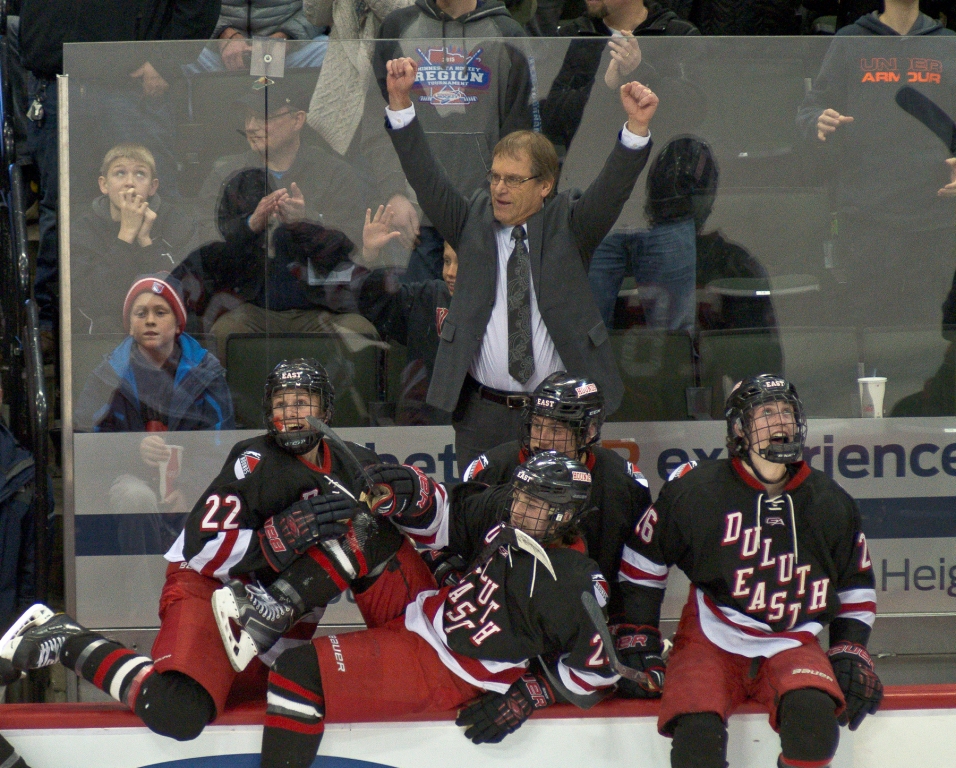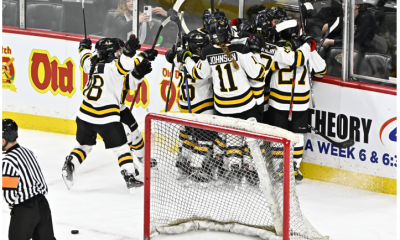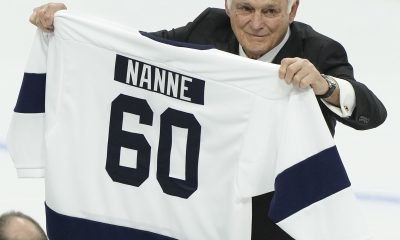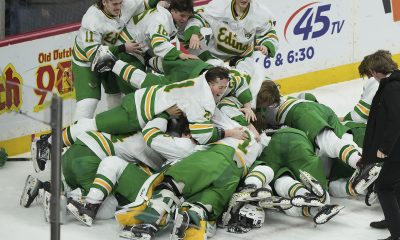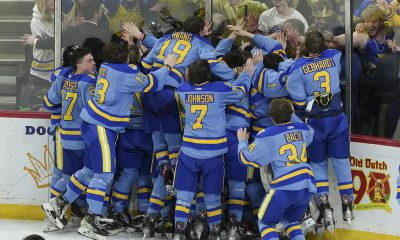If winning is so important can you please tell me the playoff champions in 2010 from the NBA, NHL, MLS, MLB and World Cup, without looking it up?
The erosion of youth sports can be linked directly to the decision to have our children play one sport year-round and to the increased monetary commitment to the “pay-for-play” concept. When did it become acceptable to have personal coaches, surgery before an injury, and rehabilitation as a way to get back on the playing field instead of just getting healthy? The atmosphere surrounding youth sports programs has changed dramatically and negatively over the years since this concept was created. Good kids, good athletes, are telling their parents that they do not want to play anymore.
The truth is that they are not having fun. Seventy percent of all youth sports participants at the age of ten stop playing by age thirteen.
There are those children who love playing their sports so much they want to play year-round.
My daughter loves chocolate, but I don’t let her have it all the time. It would make her sick!
It used to be a normal occurrence for children to play multiple sports. They played one sport for a season, putting away the equipment until the next season. They then went on to the next sport. Kids enjoyed going to practice and playing in games with their teammates. The enjoyment and improvement in skills were enhanced by having balance and diversity. This approach helped to develop the mind and body, together, through years of playing youth sports. “Specialization” referred to the particular ice-cream or snack the player preferred to eat after each contest.
It used to be that children had fun playing sports just for the enjoyment of playing with friends. Between sports, they could have active rest by playing pickup games in different sports or some other unrelated activity. They could do school work or community service. These all helped to achieve “balanced excellence.”
Now, children are told by organizations, parents, and coaches to pick a sport and stay with it year-round. Few people want to talk about where this is leading, as well as what the long-term consequences are if playing year-round doesn’t work out as planned. There is too much ego and money involved for those close to youth sports to think clearly for the good of the children. No one wants to talk about the children, families, and coaches who have been consumed by this recent phenomenon of specialization. Many have ended up breaking down mentally, physically and emotionally by the journey and results. They are quietly being pushed aside and their discontent is silenced as a new generation of hopefuls takes their place. How did this transformation evolve? Is there something going on in society that helps fuel this change?
We live in a time of “instant” gratification, information, contact, reward, and success. Long-term goals are being overrun by short-term gratification, leading to the justification of selfish behavior. Youth sports have enveloped good people, families, coaches, and school districts like a Tsunami, repeatedly knocking them down until they are too tired to resist. They just “go with the flow.” Some fear retribution; others feel they will fall behind or be ostracized by the athletic community in which they socialize and participate.
Why isn’t the idea of children having fun playing sports good enough anymore? Why are playing multiple sports discouraged? What happened to the enjoyment and the importance of the journey? The value of the process itself has been, at the very least, diminished through year-round playing. Youth sports have taken on a life of their own in importance and status in our culture. When did having quality family time, or taking a family vacation become an interruption to the participation in year-round youth sports? Time away from youth sports should not need an excuse and justification for an absence. We must get back to the fundamentals of playing for fun, learning life skills, and “balanced excellence.”
Recently, questions have begun surfacing regarding what is really going on in youth sports. The long-term ramifications of playing year-round are beginning to emerge. The idea that children enjoy sports and learn from the experience, taking the journey, has been replaced with short-term gratification and the hope of long-term financial rewards. Most spend more than they will ever get back.
Glory, false rewards, and debilitating spending have overwhelmed youth sports. Parents and coaches are led to believe that the way to get to the “pot of gold at the end of the rainbow” can only come from playing one sport year-round. The short term reward of course, is winning. The long term reward is either a scholarship or professional contract.
This simply is not true.
Winning has become a primary goal and the mantra for youth sports participation. The dream of winning has become the goal of each game played each week of each month for an entire year! But what is being won? Who is winning? If winning is everything, does this mean that anything else is losing? Do you or anyone you know ever think that winning validates who you are as a person? Do you have to win?
Well, no. We don’t always have to win. We can’t always win. To believe so is being false to the realities of life. But it’s too late. The Tsunami claims another victim.
If winning is so important can you please tell me the playoff champions in 2010 from the NBA, NHL, MLS, MLB and World Cup, without looking it up?
Look at what’s happening at youth sports games. Are we pleased with the behavior we see? The next time you are at a game, mosey on over to where other parents are sitting. Listen to what they say and how they say it. Are you hearing the joy, the humor, the encouragement being offered to the young players? How many parents are “coaching” their children from the sidelines? What is going on? Or, are you listening to yourself? How many times do we cringe when we hear parents yelling at the athletes on the field during a game, and sometimes even at practice?
Do parents really believe that their words of coaching and tutelage are helpful to their children?
Twenty kids were asked if it helped them to have parents shout at them from the sidelines during a game. All twenty responded, “No.” When did parents decide that yelling during a game was acceptable? If there had been a meeting when this was decided, certainly the kids weren’t part of it. They would have said, “That’s not a good idea. It’s hard enough to concentrate on what I’m doing without having you scream at me. It takes all the fun out of it.” Parents and other adults are being swept up in the frenzy of winning to the detriment of the kids…and themselves. Do parents and coaches really think their tirades help the children on the field, court, or ice, to play better? When did parents decide that trying to influence their children’s performance on the playing field, court, or rink was acceptable?
Parents say they are competitive, but that is not competitive, it’s butting in where you are not supposed to be. It’s just another form of entitlement. What would happen if everyone yelled at the kids just like you did? Would you want someone to do that continually to you while you were at work trying to do your job? Parents are not part of the competition, and need to stay out of it. College coaches see what you are doing and take note of it. That’s not a good thing. It’s time to Stop The Tsunami!
Related Topics
VJ Stanley has written a book called, “Stop the Tsunami in Youth Sports.” Achieving Balanced Excellence and Health while Embracing the Value of Play for Fun. You can follow VJ on twitter @VJJStanley, go to his website frozenshorts.com to read other blogs and see video interviews of Doctors, Athletes, coaches, and more. You can follow him on face book, or contact him at vj@frozenshorts.com. His book: Stop the Tsunami in Youth Sports is available in E-Reader and paperback through his website frozenshorts.com.

Click to comment







